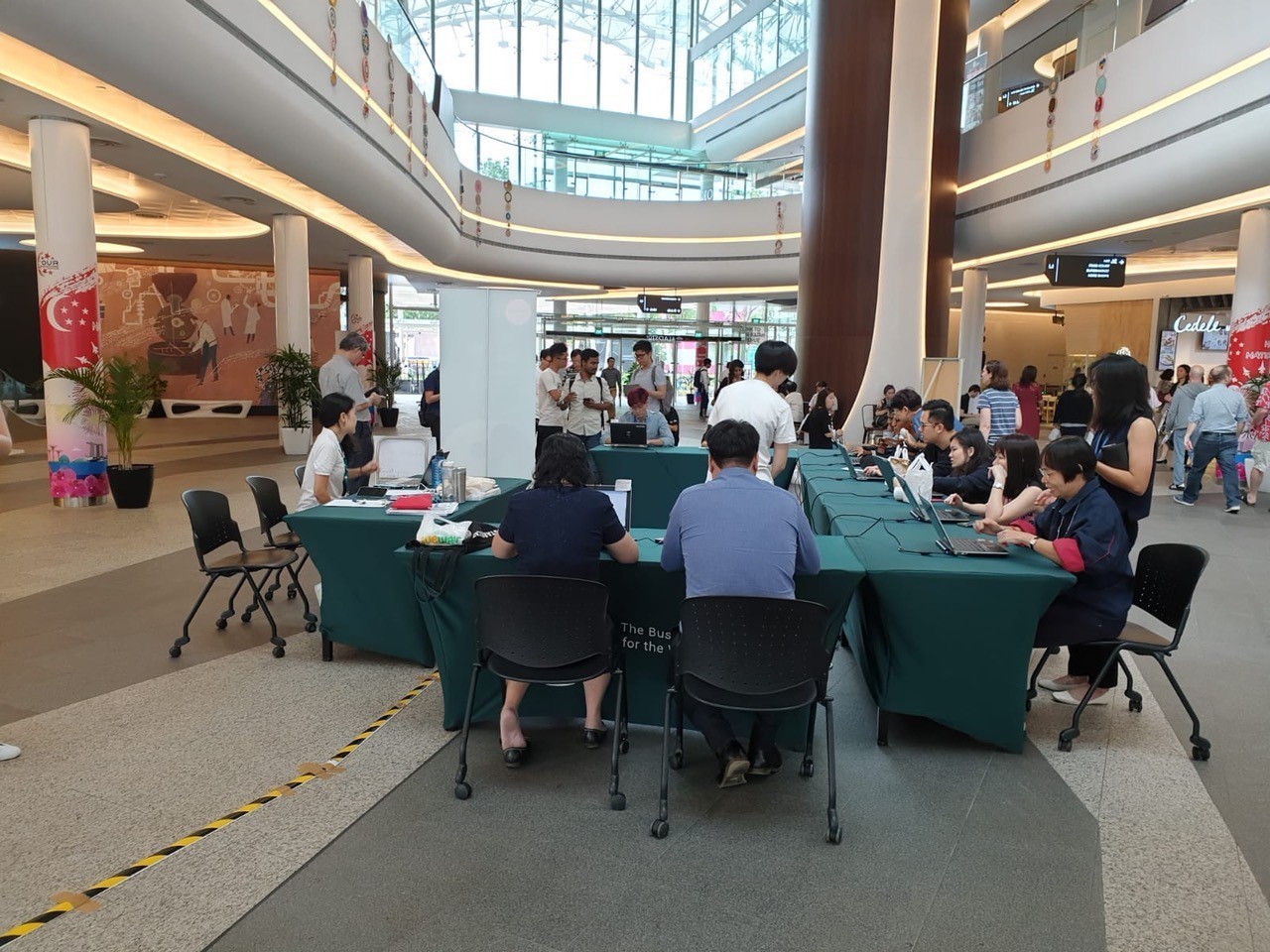Interested in doing a study with COR?
We will contact you in 3 working days' time after you submit the form. Thank you!

WHO
The INSEAD Centre for Organisational Research is open to all INSEAD-affiliated faculty, staff, postdoc, or PhD student.
WHAT
COR can help you plan the administrative details and conduct organisational science research involving working adult participants.
WHERE
Depending on your research, studies can be conducted online, at the INSEAD Asia campus, in public spaces of Singapore, at an industry partner's venue, etc.
HOW MUCH
Access to COR's services is free for INSEAD researchers. However, researchers will have to bear the cost of participant remuneration and venue/transport costs if the studies are conducted off-campus. For more details on costs, please refer to the section on Costs below.
Costs
The costs are largely divided into participant remuneration, Research Assistant (RA) remuneration, and facilities/equipment rental costs (only for off-campus).
We advise that faculty have their PhD students direct and run the studies. For faculty who do not have PhD students, we can help recruit part-time RAs for you. We do not charge any service fees or overhead costs.
Participant Remuneration
| Length of study (in minutes) | Estimated Rates (in SGD) |
|---|---|
| 0 ~ 5 | 2 ~ 3 |
| 6 ~ 10 | 5 |
| 11 ~ 30 | 10 |
| 31 ~ 60 | 20 |
On-Campus Estimated Pricing:
The table shows the breakdown of estimated costs for a 10 minute study conducted at INSEAD with 200 participants.
| Item | Approximate Costs (in SGD) |
|---|---|
| Token of participation (e.g. $4 to each participant) | 800 |
| Part timers’ fees (e.g. four part-timers to help out on the day of the event) | 400 |
| Rental of equipment (e.g. deposit required to borrow equipment and will be returned) | 100 |
| Estimated Total Cost of Study | 1300 |
Off-Campus Estimated Pricing:
We are able to conduct studies at different public spaces in Singapore. A frequently used area would be Level 1 Atrium North Fusionopolis, right next to INSEAD Asia Campus.
The table shows the breakdown of estimated costs for a 10 minute study conducted in the Level 1 atrium with 200 participants.
| Item | Approximate Costs (in SGD) |
|---|---|
| License/ Permit application (e.g. SCDF application) | 80 |
| Venue | 400 |
| Transportation | 220 |
| Token of participation (e.g. $4 to each participant) | 800 |
| Part timers’ fees (e.g. four part-timers to help out on the day of the event) | 400 |
| Rental of equipment (e.g. deposit required to borrow equipment and will be returned) | 100 |
| Estimated Total Cost of Study | 2000 |
Level 1 Atrium North Fusionopolis:
Address: 1 Fusionopolis Way, #01 Fusionopolis One, Singapore 138577
Level 1 Atrium refers to the open space between Mos Burgers and Mr. Bean. This space attracts working adults who pass by the space especially during the lunch hours.

Testimonials
Research Publications that utilise COR
-
It’s the journey, not just the destination: Conveying interpersonal warmth in written introductions (Nault et al., 2023)
-
Professionals are often required to introduce themselves and engage in self-promotion in writing. Text-based self-promotion allows people to reach a wide audience but can make it difficult to convey warmth. Across seven studies (N = 2,533), we show that people conveyed greater warmth in written introductions when they emphasized their journey (i.e., the path taken to achieve their accomplishments) along with their outcomes (i.e., the accomplishments). In Studies 1a-1d, we used a real-world context and found that more journey-oriented LinkedIn introductions increased warmth perceptions, partly because these introducers were perceived as humbler. These results extended beyond naïve evaluators to human resources specialists. Studies 2–4 experimentally replicated these effects, additionally examining how information regarding the difficulty of outcomes affected perceptions and identifying communication medium as a boundary condition: journey information increased perceived warmth in text, but not video introductions. Adding journey information to written introductions conveys warmth and creates more favorable impressions. (PsycInfo Database Record (c) 2023 APA, all rights reserved)
Nault, K. A., Sezer, O., & Klein, N. (2023). It’s the journey, not just the destination: Conveying interpersonal warmth in written introductions. Organizational Behavior and Human Decision Processes, 177, Article 104253. https://doi.org/10.1016/j.obhdp.2023.104253
-
The impact of concession patterns on negotiations: When and why decreasing concessions lead to a distributive disadvantage (Tey et al., 2021)
-
We propose that making a series of decreasing concessions (e.g., $1,500–1,210–1,180–1,170) signals that negotiators are reaching their limit and that this results in a negotiation disadvantage for offer recipients. Although we find that most negotiators do not use this strategy naturally, seven studies (N = 2,311) demonstrate that decreasing concessions causes recipients to make less ambitious counteroffers (Studies 1–5) and reach worse deals (Study 2) in distributive negotiations. We find that this disadvantage occurs because decreasing concessions shape recipients’ expectations of the subsequent offers that will be made, which results in inflated perceptions of the counterparts’ reservation price relative to the other concession strategies (Study 3). In addition, we find that this disadvantage is particularly large when concessions decrease at a moderate rate (Study 4a) and when decreasing concessions takes place over more (vs. fewer) rounds (Study 4b). Finally, we find that recipients can protect themselves against the deleterious effects of decreasing concession by thinking of a target before they enter the negotiation (Study 5). (PsycInfo Database Record (c) 2021 APA, all rights reserved)
Tey, K. S., Schaerer, M., Madan, N., & Swaab, R. I. (2021). The impact of concession patterns on negotiations: When and why decreasing concessions lead to a distributive disadvantage. Organizational Behavior and Human Decision Processes, 165, 153–166. https://doi.org/10.1016/j.obhdp.2021.05.003
-
The Self-Promotion Boost: Positive consequences for observers of high-rank self-promoters (Nault & Yap, 2023)
-
This research examines how self-promotion conducted by relatively higher ranked individuals affects observers’ affect and motivation. We developed and tested the idea of a Self-Promotion Boost—superior self-promoters inspire lower ranked observers by...
Read more
-
Too naïve to lead: When leaders fall for flattery (Rogers et al., 2023)
-
Flattery is one of the oldest and most commonly used impression–management tactics in everyday life. Though it often brings benefits to the flatterer, less is known about how it affects the target. In the present research, we explore when and why being flattered can be costly for leaders—common targets of flattery—depending on how they respond to it. We suggest that leaders who are observed rewarding flatterers risk appearing naïve to others. Across seven studies and six supplementary studies (N = 4,612), we find evidence that leaders who grant favors to flatterers are often perceived to have naively “fallen for flattery,” which shapes observers’ impressions of the leaders and the organizations they represent. A first set of studies (Studies 1–4) detail the variety of factors that lead observers to conclude their leader has fallen for flattery and the resulting impacts to the leaders’ reputation and their organization (e.g., competence, warmth, commitment to the leader, organizational fairness). The second set of studies look at the contextual factors that impact what costs leaders pay for being perceived to have fallen for flattery, including the type of flattery (Study 5), who is harmed by the favor (Study 6), and the leader’s apparent awareness of the motives underlying flattery (Study 7). Whereas previous research highlights positive consequences of flattery for the flatterer, we find that flattery comes with costs for leaders and their organizations. We discuss theoretical and practical implications for leaders who are frequently flattered. (PsycInfo Database Record (c) 2023 APA, all rights reserved)
Rogers, B. A., Sezer, O., & Klein, N. (2023). Too naïve to lead: When leaders fall for flattery. Journal of Personality and Social Psychology, 125(6), 1394–1419. https://doi.org/10.1037/pspi0000433
Toolkit
Below are time-saving templates to help you set up your study.
This is a consent form, which is distributed before the experiment to all participants. All text in square brackets must be changed by the researcher before the experiment. The standard text has been written in cooperation with the INSEAD legal department and it is not to be altered.
The debriefing contains the true purpose of the experiment, written in a non-technical way. It should reveal the cover story and explain any motivations. The debriefing should also contain general information regarding the kind of research you are doing, such as the use of resources. The participant, upon reading the debriefing, should have the impression of having participated in a worthwhile experiment.
Institutional Review Board

The INSEAD Institutional Review Board (IRB) provides formal validation of all research with human participants at INSEAD. The IRB protects the rights and welfare of individuals who volunteer to participate in the research conducted at the lab. The purpose of the IRB is to protect not only the rights of human participants but also the school and its researchers.
Applications to the IRB are valid for a specific research project. Most applications to the IRB are treated within a 2-week period.
For more information, please contact the IRB at [email protected]




